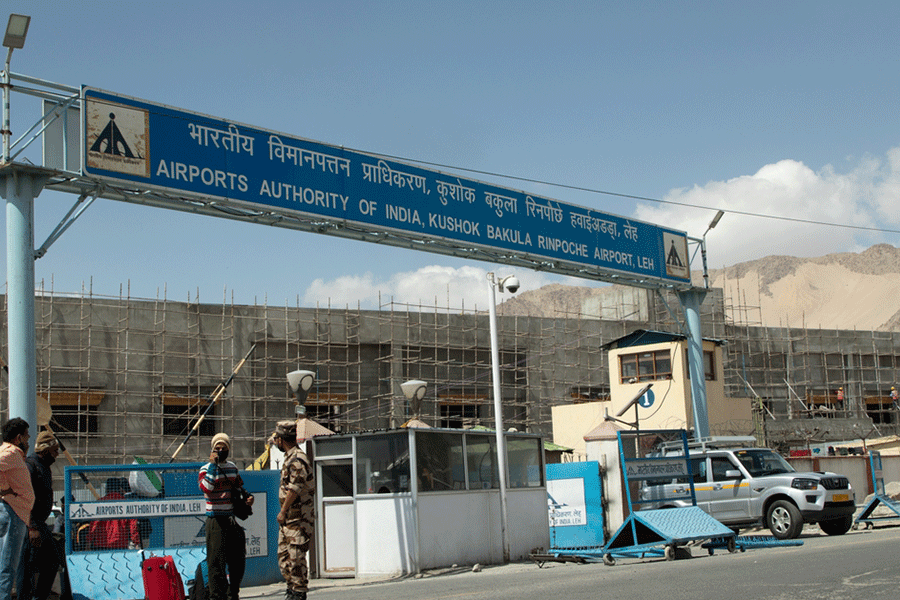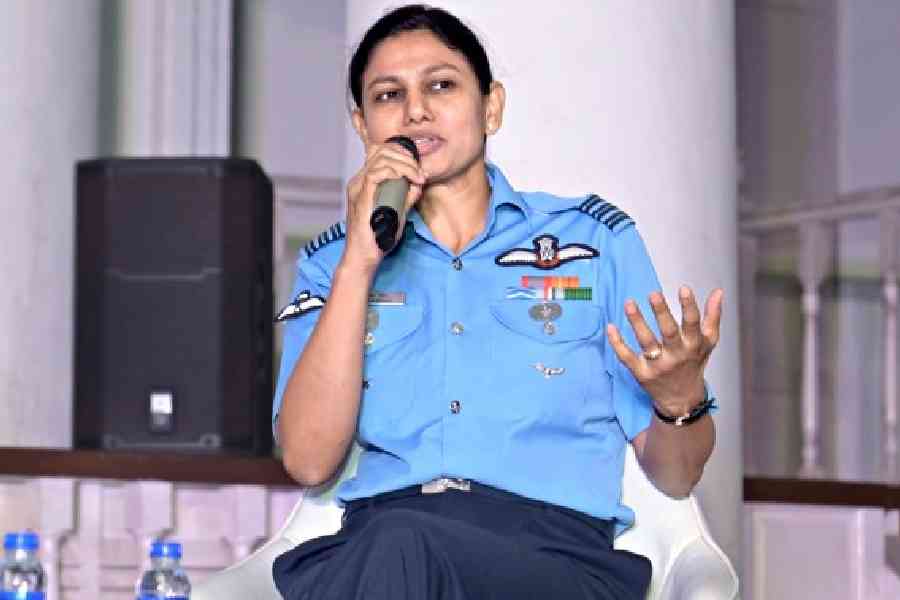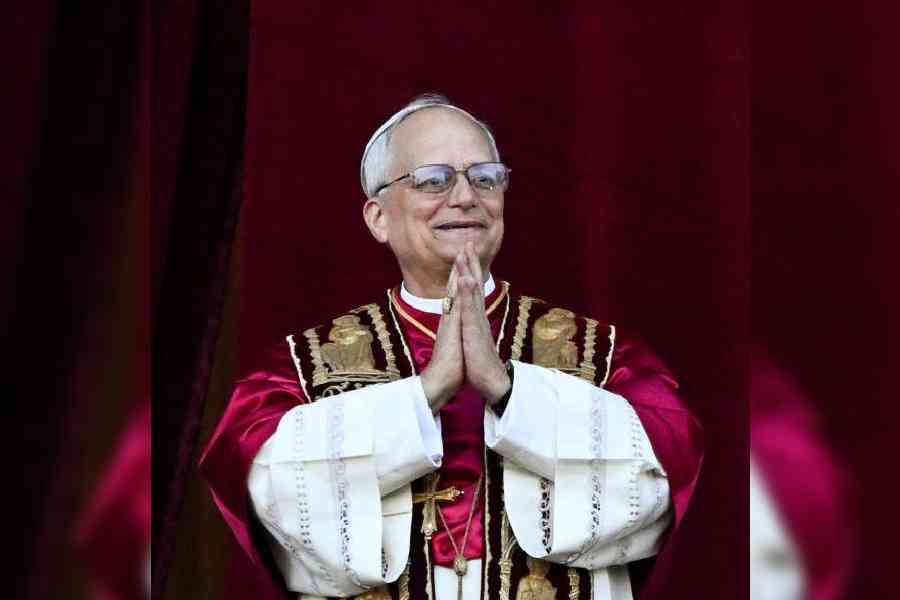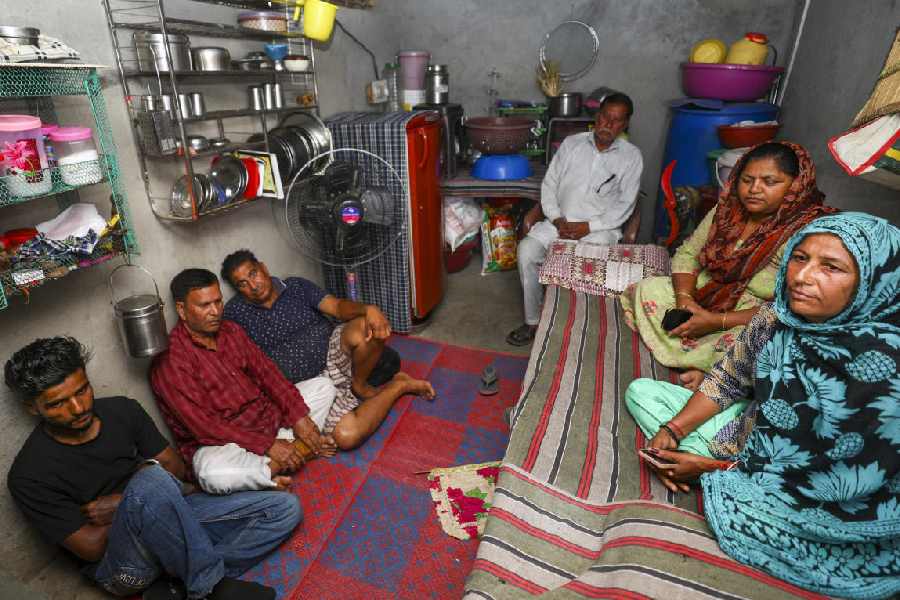 |  |
| The 1939 custom-made silver buggy (left) and the silver elephant howdah at the Silver Museum, Udaipur | |
Jaipur, April 2: Admirers of big fat weddings running out of themes and growing tired of nouveau riche stunts can take a tour of Udaipur’s City Palace and rebuild their ideas bank.
Takeaway Number 1: gold need not be last word at a wedding. Silver can be equally glittering — as the recently opened Silver Museum here shows.
Among the exhibits is a silver buggy with a story. When Bikaner and Udaipur entered into a royal nuptial in 1940, the buggy was part of the imperial dowry from Bikaner.
A buggy was routine for Rajasthan’s maharajas. But this one was exceptional. Custom-made in England, the buggy was in shining silver.
It was a surprise gift from a father to his beloved daughter Sushila Kumari, who got married to Maharana Bhagwat Singh of Mewar, Udaipur.
The 9ft-long buggy, made by Birmingham’s Fredric Selby and Co. Ltd in 1939, was an instant hit with Udaipur’s royal family, so much so that everyone wanted a ride.
Bhupinder Singh Auwa, deputy director of the Maharana Mewar Charitable Foundation (MMCF) of the City Palace, recalls: “Sushila Kumariji’s father wanted to do something special for her on her wedding. Hence the silver buggy from England, but the craftsmanship on it is local.”
Jeweller Naveen Agarwal said: “Indian silver is remarkable for its limitless forms, noted for its technical perfection and characterised by its varied use. Held sacred in traditional Hindu beliefs, silver is associated with the cool moon, surpassed only in importance by warm gold. Being associated with purity and religion, silver was extensively used by the Indian royalty.”
 |
| The silver wedding mandap of Princess Padmaja of Udaipur. Her wedding took place two years ago |
A twirling ballerina on the door, solid silver chassis, shiny wheels and spokes made the buggy all the more desirable. It was tailor-made with folding extendable steps to ensure that Rajasthani queens, who wore flowing ghagras, do not miss a step.
The buggy must have cost the maharaja a fortune even at the time it was made. The present Maharana Shriji Arvind Singh remembers taking rides with his mother.
The silver buggy along with other exhibits like the taam jham (open litter), Ram rewaris (palanquins for Gods), elephant howdah (decorated seats), decorated horse, gulabpash (rose water sprinklers), surahis (decanters) are part of the Silver Museum.
A modern-day exhibit has also made the cut: a silver wedding mandap built two years ago for Shriji’s daughter Padmaja.
The Silver Museum, spread over 7,100 square feet, is filled with family heirlooms dating back to 743AD. The items are displayed at the Amar Mahal, believed to the inspiration behind the Taj Mahal.
Open throughout the week from 9am to 4.30pm, the museum charges an entry fee of Rs 500 per person from 9 am to 10am. From 10am to 4.30pm, the cost of ticket comes down to Rs 115. The price difference is built in to attract those who want to take in the exhibits in a less crowded environment. The palace also has a crystal gallery, which charges Rs 500 extra for a tourist.
MMCF deputy director Auwa said: “Shriji wanted to preserve and showcase them as Mewar’s unique heritage, adding something new to the already famous City Palace, which is stocked with priceless artworks and an exclusive crystal gallery.
“By adding this new Silver Museum, he is only trying to make his lineage relevant to the 21st century. His aim is not only to bring the City Palace Museum on a par with other world-class museums and to attract as many tourists as possible but also to reinvent, recast the heritage and legacy in different moulds to keep the interest going in this new-age.”
Just like the museum, other palaces and forts across Rajasthan are reinventing themselves to keep tourist interest alive throughout the year.
One of the main additions over the past year to Jodhpur’s majestic Mehrangarh Fort has been its Champagne Tour.
The USP of the tour is a walk through the fort with the museum curator as twilight descends. The curator shares his expertise and insights into the museum and its possessions.
Tourists, while sipping champagne during this one-hour tour, hear tales of sacrifice, extraordinary chivalry and experience the joy of discussing a painting or the fort architecture. Dinner in the fort ramparts amidst Rajasthani folk music and dance ends the trip.
The director and curator of the Mehrangarh Fort, Karni Singh Jasol, said: “For the past one year, we have been getting a good number of tourists for this champagne trip. Usually niche tourists, who want a deeper understanding and feel of the history of this fort, book the trip in advance, which costs $650 per couple.”
He said the fort would soon add another holiday facet for a special segment of tourists called the Learning Holidays, especially during the lean season from May to August.
“The Learning Holidays will not be for tourists who want to do the usual touristy things. This holiday, in collaboration with the Aga Khan Trust for Culture (AKTC), will hold residency programmes for art and paint, music and cookery with contemporary experts. The AKTC would sponsor two international experts while two others would be sponsored by the Mehrangarh Trust,” Jasol added.
Jaipur’s City Palace has already undergone a makeover with musical groups from different countries performing here every evening.
The City Palace, till last year, used to shut shop at 5pm. But Jaipur princess Diya Kumari’s eagerness to offer something new for the tourists has helped the palace reverberate with the sound of music and dance after sunset.
Tourists have seen live performances by France’s Baroque music group, the Japan Foundation’s folk song and dance performances and colourful Italian flag exchanges in the recent past.










